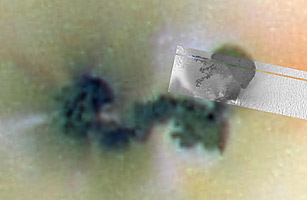
Old spacecraft never die. Well, actually, they do die, and sometimes in spectacular fashion — burning up as they plunge through a planet’s atmosphere or into the fires of the sun. The venerable Galileo probe, which was launched in 1989 and arrived at Jupiter in 1995, was sent on just such a suicide dive into the planet when its work was done in 2003 — the better to avoid even the tiny risk that it would crash onto one of the Jovian moons and contaminate it with Earthly bacteria.
But if spacecraft are mortal, their data stream lives forever, and scientists with new theories and new analytic methods often pore over the old records, looking for insights that may have slipped past earlier investigators. A collaborative team from UCLA, the University of Michigan and the University of California, Santa Cruz, recently did exactly that with some of the data Galileo collected about the Jovian moon Io and found that bubbling just beneath the surface of the little world is a massive ocean of magma — a feature unlike any other found anywhere else in the modern solar system.